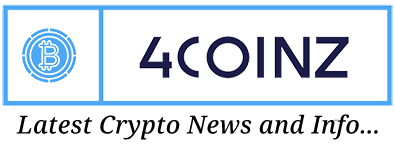In the world of crypto, digital assets, and the dream of decentralization, the middleman is a figure of scorn. We speak of peer-to-peer networks, of unmediated transactions flowing freely across borders, with no need for gatekeepers. Yet, whether we like it or not, intermediaries haunt every corner of this landscape. Some extract rent for their services; others simply maintain order in the chaos. But let’s be clear — whenever there’s a hiccup, a wallet vulnerability, or a glitch in a smart contract, someone must step in. And that someone, whether you call them a middleman or not, holds the keys to the updated and secure system.
You’re reading Crypto Long & Short, our weekly newsletter featuring insights, news and analysis for the professional investor. Sign up here to get it in your inbox every Wednesday.
Of course, as markets mature, the hope is that the role of these intermediaries becomes less overpowering. Bitcoin, Ethereum — these titans of decentralization — have grown vast networks, with developers who can troubleshoot problems out of a sense of duty or altruism. In this sense, scale may soften the blow of centralization, but the presence of intermediaries never truly vanishes. They are merely transformed.
As we venture into the tokenization of real-world assets the concept of intermediaries takes on new dimensions, and not just in technical terms but in the realm of regulation. Sandbox regimes are emerging across various jurisdictions, and they make one thing clear: Central Securities Depositories (CSDs) will not only persist but may become more central than ever before. Their larger, more globally connected counterparts, the International CSDs, are poised to take on an even more crucial role.
Brass tacks: some have dismissed these tokenization efforts as mere theater. After all, these tokens are not natively minted on a blockchain but are instead representations of assets still residing with the very intermediaries that Distributed Ledger Technology (DLT) was supposed to render obsolete. It’s true that non-native tokenization hinders the full potential of the technology, limiting its ability to unlock the kind of streamlined, decentralized future many envision. These efforts, imperfect as they may be, offer an olive branch, a starting point that allows industry players to engage with DLT while keeping one foot in the world they know.
Some may rush to point out the redundancy of a CSD’s internal ledger, which must be reconciled against a blockchain that is theoretically already immutable and automatic by design. But this is a redundancy regulators are more than comfortable with.
Efficiency is not always the endgame here — stability and familiarity are. Complaints may fall on deaf ears. Instead, the challenge for industry participants is to show how tokenization, even within this framework of intermediaries, offers a path forward.
We see this path being forged today by behemoth asset managers, even as they grapple with the limitations of the blockchain technology they’ve chosen: limited scale, lack of interoperability, and a glaring absence of privacy. Either these obstacles no longer matter (spoiler: they do), or tokenization is managing to realize its potential despite them. The latter seems the more realistic conclusion, as it highlights the ways in which collateral access management and asset mobility are already providing tangible operational efficiencies in the real world.
Perhaps it is not about erasing the middleman but reshaping their role — refining the interplay between old-world institutions and new-world technology, until native tokenization finds its rightful place. In the meantime, blockchain-based financial market infrastructure is already a reality, though never entirely trustless. And that, ironically, is a reality you can take to the bank.
Note: The views expressed in this column are those of the author and do not necessarily reflect those of CoinDesk, Inc. or its owners and affiliates.

